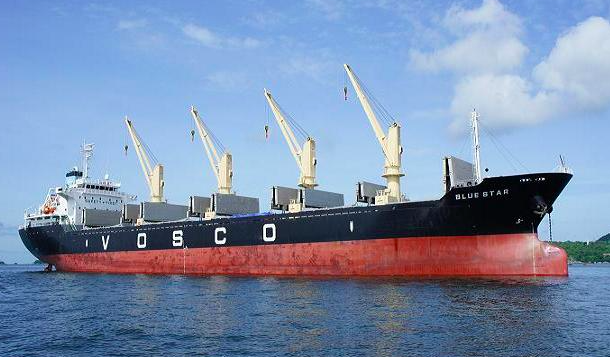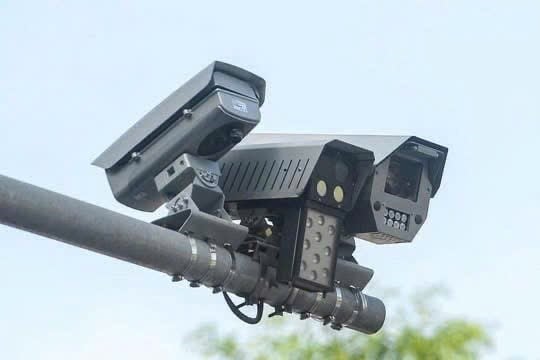 Economy
Economy

Emily Blanchard, Chief Economist at the US State Department, was in Việt Nam last week to discuss US priorities in the Indo-Pacific related to supply chain resiliency and decarbonisation efforts.

|
| Chief Economist Emily Blanchard. — Photo courtesy of US Embassy Hanoi |
Emily Blanchard, Chief Economist at the US State Department, was in Việt Nam last week to discuss US priorities in the Indo-Pacific related to supply chain resiliency and decarbonisation efforts.
She had a talk with Việt Nam News reporter Lê Việt Dũng on bilateral trade patterns in light of the Comprehensive Strategic Partnership and some measures to attract more US investments in Việt Nam.
Việt Nam's Prime Minister has recently said that the GDP growth is projected to top 5 per cent this year. What do you think about the projections?
I have every reason to be confident in Việt Nam's own projections. This has been a rough year in the global economy. We've seen demand slowdown, particularly in a very large northern neighbour. That's really consequential for trading partners around the world.
The slowdown in the Chinese economy will also mean a slowdown in the US economy. And it'll be a slowdown for all of China's trading partners in the region. And again, everywhere. So we're just starting to see some of that demand slowing here.
I'm optimistic though, that this trend will reverse itself in the near future. And maybe far more importantly, the fundamental drivers of GDP growth and demand and supply in Việt Nam are all strong. The fundamental drivers of long-run sustainable real economic growth are investments in people, infrastructure, innovation, strong governance, and the environment.
And on all of these fronts, you can see the incredible momentum that Việt Nam already has shown and continues to show not only in words but in actions and deeds. So, I'm very optimistic about the future trajectory of growth in Việt Nam.
The Inflation Reduction Act has provisions for subsidies for electric vehicle producers, but there are stringent criteria for them to be entitled to the subsidies. Do you have any advice on that?
The Inflation Reduction Act (IRA) specific to electric vehicles (EV) does a number of things all at once. It creates new charging station infrastructure that will be absolutely critical to EV adoption. It subsidises consumer purchases of electric vehicles.
And here, I think you're referring to some specific sourcing requirements for particular pieces of the tax credits. You're quite right when you cited the legislation as being quite complex. I agree it is, as I've read it very closely. And the implementation guidance is even more complex than that. In fact, the Treasury Department, which decides how these tax credits work, is still working through some of the details a year later, and announcing those as decisions are made.
The way these tax credits work, it is very tempting to think of them as on or off. Cars are going to be eligible for all of the credits or not eligible at all. The truth is the credits work in pieces. And many of those pieces will be easier to meet than a couple of those other pieces. Getting that full tax credit might be a little bit more difficult for some producers in some regions of the world. But getting at least a piece of that credit will be quite easy.
The other thing to keep in mind is that not all cars are treated the same way in the IRA. For example, commercial vehicles are not subject to the same sourcing requirements at all, this is a really important thing to recognise.
The last thing I'll say, and maybe this is the most important piece of all, the IRA has already created an unprecedented increase in demand for decarbonisation technologies, including electric vehicles in the US. That increase in demand is going to benefit producers of these products everywhere in the world. Tax credits or not, the increase in demand is just going to be enormous.
How would the Vietnam-US Comprehensive Strategic Partnership impact the bilateral trade pattern in the short term?
The Comprehensive Strategic Partnership (CSP) builds one of the most important components as a necessary and not quite, but close to a sufficient condition for increasing bilateral trade flows between our two countries. And that's trust and policy certainty.
What the two governments and leaderships have signalled with the CSP, which was announced last month, is our continuing commitment to work together to increase the business-enabling environment on both sides of the Pacific to deepen our economic engagement.
As firms can change and update their expectations for what they can find on both the US and the Vietnamese side of the border, they will continue to deepen the trade partnerships to sign more supply or purchase contracts, maybe with longer terms, and certainly to engage in more foreign investments.
For Việt Nam, what could be done to attract more investments from the US?
There are a few things. The most important driver of economic growth and opportunity, the thing that attracts so many companies to come to Việt Nam, is people. Workforce investments in people are going to be critical determinants, and we in the US want a partner in those endeavours.
But it's not just people creating an electrical grid for the future. Particularly, advancing and accelerating the decarbonisation or the green transition will be critically important. This is something that so many firms demand in the world.
So many companies have already made a commitment at the C-suite level, answering the demands of their consumers or their shareholders, or sometimes just their stakeholders or their workers. They've said they've decided to go Net Zero, often on incredibly ambitious timelines. And their ability to source green power will be a key determinant for a lot of those companies.
The sooner that Việt Nam can create more renewable power, bring it into the electrical system, and make it available for investors, the sooner that will open the door for an awful lot of investments.
And then the last thing I'll mention: just creating the enabling environment for businesses, particularly in the digital space, so that companies can operate their digital platform seamlessly.
We're entering the Internet of Things, the period in which when you buy an iPhone, you're buying at least as much of the service that Apple provides to you in terms of the software and the operating system on that phone as you are the device itself. And the simple reality is that digital and physical products are bundled together in really important ways.
Partnering with Việt Nam and partners around the world is critically important to make sure that firms can innovate at that intersection of the physical and the digital to create the technologies of the future.
These are the three places where I would focus most to attract investors to Việt Nam. — VNS